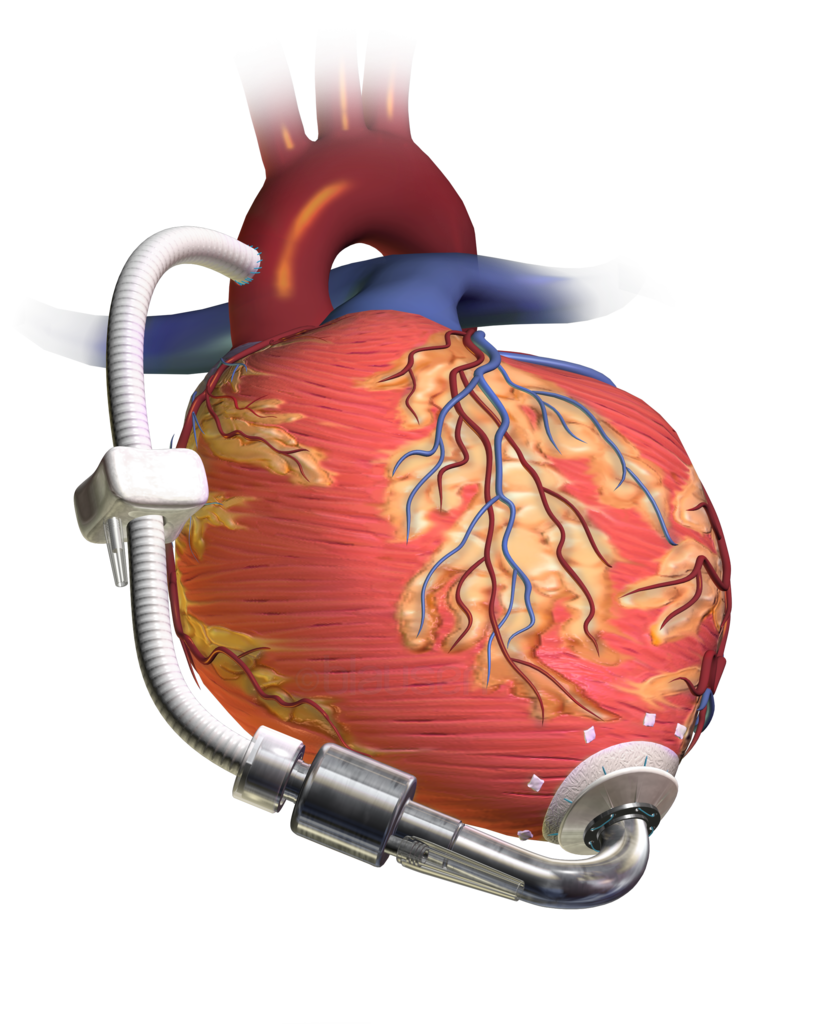What is an left ventricular assist device (LVAD)?
An LVAD is a device that is sometimes called a ‘mechanical heart’. It assists the heart that is not working properly and helps it pump blood effectively to all the vital organs and tissues in the body.
Heart failure is a clinical condition where the heart muscle is unable to pump blood effectively. It is a consequence of different causes, and the end result is that blood does not reach all the organs properly. The LVAD assists the heart in pumping blood throughout the body.
Just of note, the LVAD does not replace the heart muscle and is not a substitute for a heart transplant or bypass. It is a device that is placed in a patient’s chest to support the function of a weak heart. It is often used in patients who are awaiting a heart transplant or open heart surgery. In other words it is used as a ‘bridge transplant’.
In some patients, LVADs may be used in the long-term support of their heart function especially if they are terminally ill and are not suitable candidates for heart transplantation. This form of therapy is known as destination therapy.
How does an LVAD work?
In essence, and LVAD is an artificial pump. One end of the pump is attached to the left ventricle and the other end is attached to the aorta.
When blood from all parts of the body enters the left ventricle, it fills up the chamber of the LVAD attached to the left ventricle. Sensors in this chamber recognise when it is full and then pumps the blood through a tube into the aorta.
The LVAD can be powered by a battery pack that is connected to the device through a thin tube placed under the skin. This tube is called a driveline. The battery pack requires recharging every night.

What are the benefits of a left ventricular assist device?
The primary benefit of an LVAD is that it can help keep symptoms of heart failure such as tiredness and breathlessness during the time that the patient is awaiting heart transplantation. By improving the flow of blood from the heart to the rest of the body, it can improve the patient’s exercise capacity and flow of blood to vital organs.
In other words, the left ventricular assist device allows the heart to rest a little while the device does all the work.
Clinical studies have shown that LVADs can double the one year survival of patients with end-stage heart failure as compared to those who take medical therapy alone. However, the risks have to be taken into consideration with this treatment.
What are the risks of LVAD?
Some of the common risks that are involved in implantation of a left ventricle assist device include
- Infection
- Heart failure that does not respond to treatment
- Failure of the device itself
- Formation of blood clots
- Internal bleeding
- Breathing difficulty i.e. respiratory failure
- Stroke
- Kidney failure
LVADs are a very expensive therapy, running into the 10’s of lakhs in India. It is available only in certain centers, and strict criteria are taken into consideration before it is implanted.
